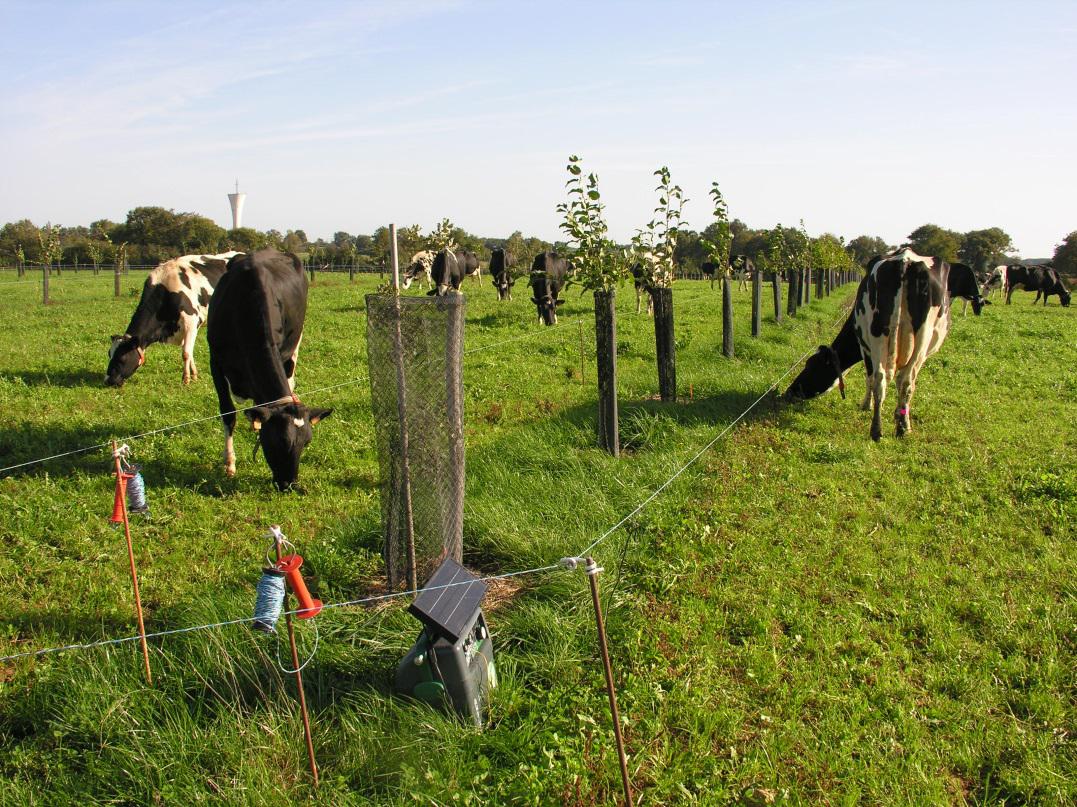
Sistemi agroforestali con ruminanti, Francia
Descrizione del sistema
Enti di ricerca ed agricoltori francesi hanno investigato la possibilità di integrare colture legnose arboree con la produzione bovina, ovina e caprina
Meeting iniziale con gli stakeholders
Un primo meeting è stato organizzato il 1 luglio nella Francia settentrionale; a questo ne è seguito un secondo apresso l’INRA Lusignan Experimental Centre il 28 agosto 2014. In totale 27 persone hanno partecipato agli incontri. Miglioramento del benessere degli animali e dell’immagine dell’azienda sono visti come i principali effetti positivi di sistemi agroforestali che integrano componenti arboree con il pascolo di bovini, caprini ed ovini. Gli aspetti negativi sono legati alla complessità gestionale di tali sistemi, soprattutto per quel che riguarda l’organizzazione del lavoro. Le principali aree di interesse scientifico riguardano la protezione delle piante dall’azione del pascolo, la disposizione spaziale degli alberi per ottimizzare la produzione foraggera, la valutazione nutrizionale delle specie arboree e la raccolta di informazioni tecniche ed economiche di tali sistemi. Per maggiori informazioni contattare Eric Pottier (eric.pottier@idele.fr).
Download the initial stakeholder report
Download the initial research and development protocol
Download the system description
A system description report providing an update on agroforestry research with ruminants in France was produced in December 2015.
Lessons learnt
In July 2017, Sandra Novak and Eric Pottier summarised the lessons learnt from their research of agroforestry with cattle in France. The research on tree protection at the experimental site at INRA Lusignan showed that electric fencing and metal fences are effective in controlling cattle damage to the trees. However it was also necessary to use strong mesh guards on each individual tree to limit the damage from deer. Planting trees in double or triple rows was more effective (in terms of costs and weed control) than planting single rows. It was also noted that although the trees will provide production benefits in the medium to long-term, the “up-front” costs are significant.
A study of the effect of the young trees on pasture production showed that although grass production was reduced near the trees; the pasture production from the agroforestry and the (no trees) control plots was similar at a plot level. The trees tended to reduce the dominance of clover (Trifolium repens) and increase the dominance of perennial ryegrass (Lolium perenne).
The research also examined the nutritive value of the leaves of 10 tree, shrub or liana species relative to alfalfa. The crude protein concentration varies from less than 85 g kg-1 in holm oak to more than 220 g kg-1 in black locust, chestnut, ash and white mulberry. Both white mulberry (Morus alba) and common ash (Fraxinus excelsior) have sufficient digestibility and nitrogen degradability to be included in the diet of lactating cows in mixed crop-livestock systems.